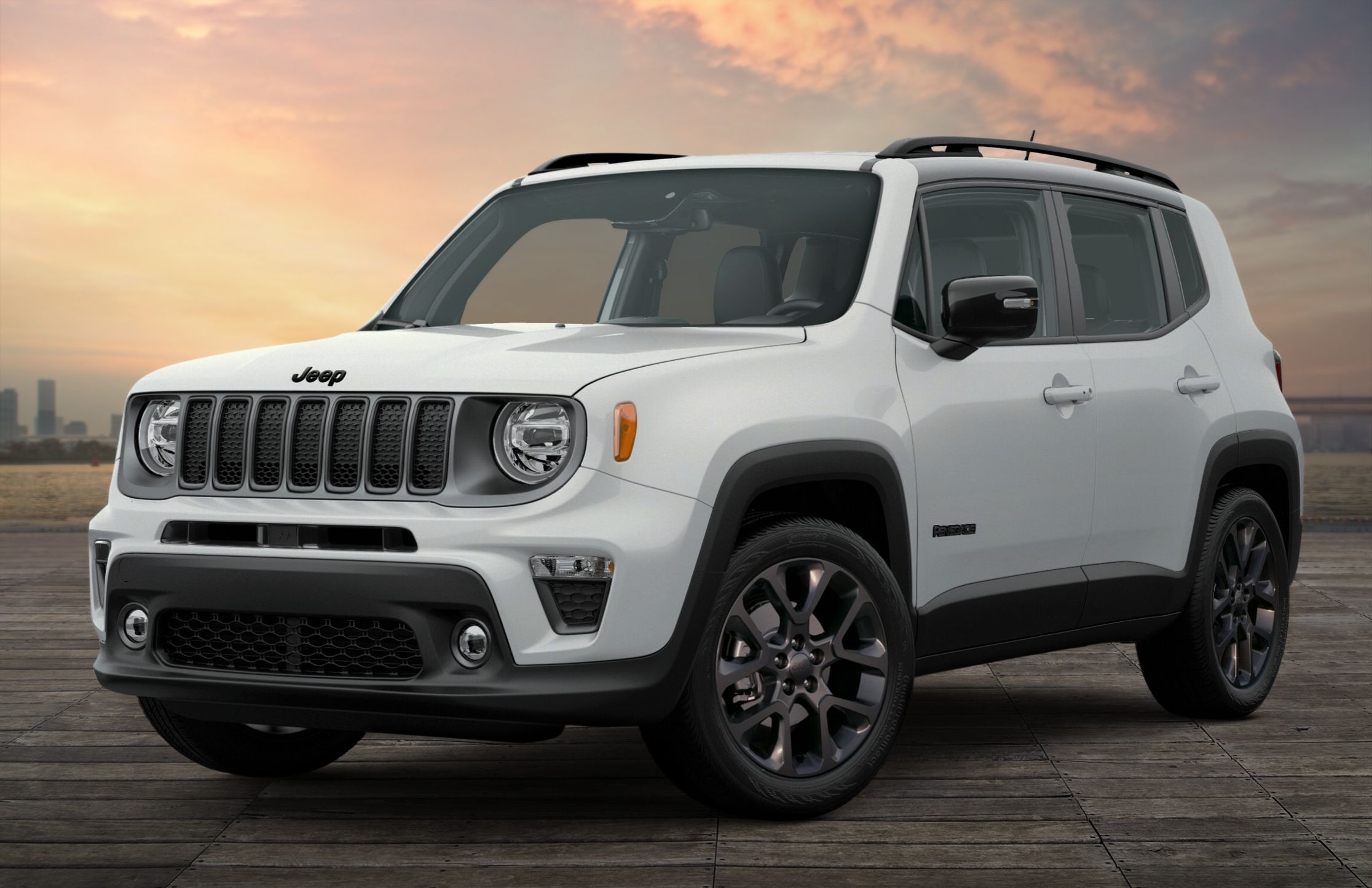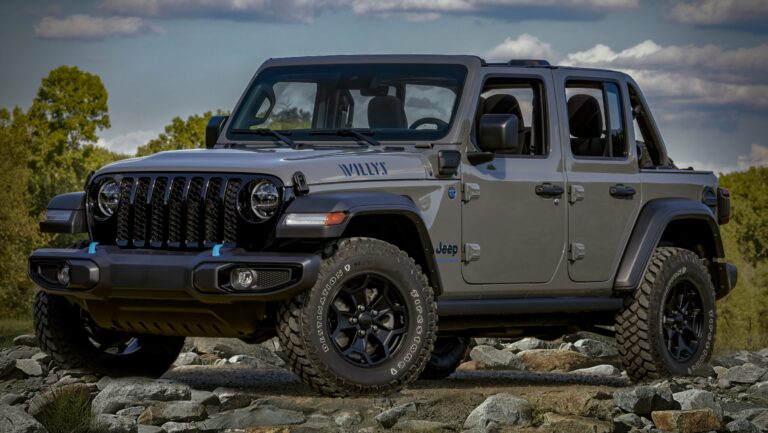Jeep CJ Body For Sale: Your Ultimate Guide to Restoring, Rebuilding, and Customizing a Classic
Jeep CJ Body For Sale: Your Ultimate Guide to Restoring, Rebuilding, and Customizing a Classic jeeps.truckstrend.com
The allure of a classic Jeep CJ is undeniable. Its rugged simplicity, iconic seven-slot grille, and go-anywhere spirit have cemented its place in automotive history. For enthusiasts looking to restore a weathered veteran, build a custom off-road beast, or simply replace a severely damaged original, the quest often begins with a fundamental component: the Jeep CJ body itself. Finding a "Jeep CJ Body For Sale" is more than just a transaction; it’s the first step in breathing new life into a legend.
This comprehensive guide will delve into everything you need to know about acquiring a CJ body, from understanding the different types available to navigating the buying process, ensuring you make an informed decision for your next project.
Jeep CJ Body For Sale: Your Ultimate Guide to Restoring, Rebuilding, and Customizing a Classic
Why Buy a Jeep CJ Body? The Foundation of Your Dream Build
The reasons for seeking out a standalone Jeep CJ body are as diverse as the vehicles themselves. Often, an existing CJ might have a solid frame and powertrain but a body ravaged by rust, accidents, or decades of hard use. In other cases, a builder might be starting from scratch, constructing a custom vehicle around a specific vision. Here are the primary motivations:
- Restoration Projects: The most common reason. Original CJ bodies, especially those from the 1970s and 80s, are highly susceptible to rust in floorboards, frame mounts, cowl areas, and rear quarters. A new or better-conditioned body is essential for a complete, authentic restoration.
- Custom Builds & Hot Rods: For those dreaming of a unique creation, a bare CJ tub offers a blank canvas. Whether it’s a high-performance rock crawler, a street-legal hot rod, or an overlanding rig, starting with a clean body allows for precise customization without battling existing damage.
- Replacement for Severe Damage: Accidents, rollovers, or extreme off-road adventures can leave a CJ body beyond economical repair. Sourcing a new body can be a more cost-effective and structurally sound solution than extensive bodywork.
- Preserving a Classic: For purists, finding an original body in excellent condition can be key to maintaining the vehicle’s historical integrity and value, especially for rare models like the CJ-8 Scrambler.

Types of Jeep CJ Bodies Available: Steel, Fiberglass, and OEM
When searching for a Jeep CJ body for sale, you’ll encounter several distinct categories, each with its own advantages and disadvantages. Understanding these options is crucial for making the right choice for your project.
1. Original/Used OEM Steel Bodies
These are genuine factory bodies pulled from donor Jeeps. Their primary appeal lies in their authenticity and original design.
- Pros:
- Authenticity: True to the original vehicle, important for purist restorations.
- Fitment: Designed to bolt directly onto the original frame with minimal fuss.
- Resale Value: A fully restored CJ with an original body can command higher prices among collectors.
- Cons:
- Condition: Often come with varying degrees of rust, dents, and previous repairs. Finding one in excellent, rust-free condition is rare and expensive.
- Labor Intensive: Requires significant bodywork, rust repair, and preparation before painting.
- Availability: Becoming increasingly scarce, especially for certain model years (CJ-5, early CJ-7).
2. Aftermarket Steel Bodies (Reproduction)
Several manufacturers produce brand-new steel bodies designed to replicate the original CJ tubs. These are often made with modern tooling and sometimes thicker gauge steel.
- Pros:
- Brand New: No rust, no dents, a perfect starting point.
- Durability: Often made from high-quality steel, sometimes thicker than OEM, offering enhanced rigidity.
- Availability: Readily available from major Jeep parts suppliers.
- Paint Ready: Much less prep work compared to used bodies.
- Cons:
- Cost: Generally the most expensive option upfront.
- Fitment: While designed to be direct replacements, minor alignment or drilling might be required due to manufacturing tolerances.
- Weight: Can be heavier than fiberglass, though this is often seen as a pro for structural integrity.
3. Aftermarket Fiberglass Bodies
Fiberglass bodies offer a lightweight, rust-proof alternative to steel. They are molded from existing CJ bodies, replicating their shape.
- Pros:
- Rust-Proof: Will never rust, making them ideal for areas with harsh climates or for off-roaders who frequently encounter water.
- Lightweight: Reduces overall vehicle weight, which can improve performance, fuel economy, and handling (especially off-road).
- Durable: Resistant to minor dents and dings; repairs are often simpler than steel.
- Smooth Finish: Often come with a gel coat, requiring less prep work for paint.
- Cons:
- Feel/Sound: Can feel less substantial and transmit more road noise than steel.
- Cracking: Prone to cracking under extreme stress or impact, unlike steel which tends to dent.
- Authenticity: Not considered original, which might impact resale value for purists.
- Repair Complexity: While dents are rare, severe cracks can be challenging to repair properly without specialized fiberglass knowledge.
4. Partial Bodies / Body Tubs & Panels
Sometimes, you don’t need a full body. Many suppliers offer partial tubs (e.g., just the main floor and side panels), front clips (fenders, grille, hood), or individual repair panels (floor sections, rocker panels, rear quarters). These are ideal for repairing specific damaged areas or for custom builds that integrate various components.
Where to Find a Jeep CJ Body For Sale
The hunt for a CJ body can lead you to various corners of the internet and beyond. Knowing where to look is key to finding the right fit for your project and budget.
- Specialized Jeep Parts Retailers: Companies like Quadratec, Morris 4×4 Center, Omix-ADA, and Kentrol are primary sources for new aftermarket steel and fiberglass bodies. They offer full tubs, partial bodies, and individual body panels.
- Online Marketplaces:
- eBay: A vast marketplace for both new and used parts. You’ll find everything from complete used tubs to new reproduction panels. Be diligent in checking seller reviews and asking for detailed photos.
- Craigslist/Facebook Marketplace: Excellent for finding local deals on used OEM bodies. Prices can be lower, but condition varies wildly, and you’ll likely need to arrange pickup.
- Specialized Forums & Classifieds: Websites like JeepForum.com, CJ-8.com, and other classic Jeep enthusiast sites often have dedicated classified sections where members sell parts. This can be a good source for well-maintained used OEM bodies from fellow enthusiasts.
- Salvage Yards / Auto Recyclers: While rare to find a pristine CJ body in a junkyard these days, some specialized vintage auto recyclers might have them. It’s often a treasure hunt.
- Classic Car Shows & Swap Meets: Attending these events can yield unexpected finds and allow you to inspect items in person.
- Word of Mouth: Network with other Jeep enthusiasts, mechanics, and restorers. They might know someone selling exactly what you need.
Key Considerations Before Buying Your CJ Body
Purchasing a Jeep CJ body is a significant investment in time and money. Thorough due diligence is paramount.
- Condition is King (for Used OEM): For used steel bodies, rust is the enemy. Inspect:
- Floorboards: Especially under the seats and footwells.
- Body Mounts: Where the body bolts to the frame. Rust here compromises structural integrity.
- Cowl Area: Below the windshield, a common rust trap.
- Rear Quarters & Tailgate Area: Prone to rust and damage.
- Dents & Previous Repairs: Look for shoddy bondo work or poor welds.
- Material Choice: Revisit the pros and cons of steel vs. fiberglass based on your priorities (authenticity, rust prevention, weight, budget).
- Fitment & Compatibility: Ensure the body you’re considering matches your specific CJ model year (CJ-5, CJ-7, CJ-8 Scrambler) and frame. While many are interchangeable, minor differences exist. Aftermarket bodies are designed to fit, but always verify with the manufacturer.
- Completeness: Is it just the bare tub? Or does it include fenders, a grille, windshield frame, doors, or a tailgate? More complete packages are convenient but cost more.
- Shipping & Transportation: A full CJ body is a large, bulky item. Factor in freight shipping costs if buying from afar, or plan for a large trailer/truck if picking up locally. Freight costs can sometimes rival the body’s price.
- Legal Aspects: While a bare body usually doesn’t have a VIN (the VIN is on the frame), if you’re buying a complete vehicle being parted out, ensure the seller has a clear title.
The Buying Process: A Step-by-Step Guide
- Define Your Needs & Budget: Are you doing a full frame-off restoration, or just patching up a few spots? How much are you willing to spend on the body itself, considering potential shipping, bodywork, and paint?
- Research & Identify Options: Browse online retailers, forums, and local listings. Create a shortlist of potential bodies that meet your criteria.
- Thorough Inspection (Remote or In-Person):
- For used bodies: If possible, inspect in person. Bring a magnet to check for bondo. If remote, demand dozens of high-resolution photos from every angle, including close-ups of common rust areas. Ask for video walk-arounds.
- For new aftermarket bodies: Research the manufacturer’s reputation for quality and fitment. Read reviews.
- Ask Detailed Questions:
- For used: "What is the history of the body?" "Has it been repaired before?" "Are there any hidden rust spots?" "Where was it stored?"
- For new: "What gauge steel is used?" "What is the return policy if there are fitment issues?"
- Negotiate Price: Don’t be afraid to make an offer, especially on used bodies.
- Arrange Shipping or Pickup: Coordinate logistics well in advance. For freight, get multiple quotes. Ensure proper crating or packaging to prevent damage during transit.
- Plan for Storage & Installation: Once it arrives, where will you store it? Do you have the tools and space for the body swap? Consider professional help if you’re not comfortable tackling it yourself.
Tips for a Successful Purchase
- Patience is a Virtue: Finding the perfect CJ body can take time. Don’t rush into a purchase out of desperation.
- Read Reviews and Ask for References: Especially for lesser-known aftermarket manufacturers or individual sellers.
- Factor in All Costs: Remember to budget for shipping, potential bodywork, paint, primer, and any small parts (like body mounts or hardware) that aren’t included.
- Join Online Communities: Jeep forums and Facebook groups are invaluable resources for advice, recommendations, and even leads on bodies for sale.
- Don’t Overlook Partial Tubs/Panels: Sometimes, repairing specific sections with new panels is more economical and achievable than replacing the entire body.
Potential Challenges and Solutions
- Challenge: Extensive Hidden Rust on Used Bodies.
- Solution: Thorough pre-purchase inspection, even if it means driving a few hours. If buying remotely, insist on videos where the seller taps or magnets common rust areas. If rust is found after purchase, be prepared for extensive cutting, welding, and patch panel fabrication, or consider a new aftermarket body instead.
- Challenge: Fitment Issues with Aftermarket Bodies.
- Solution: Research reputable brands known for good fitment. Be prepared for minor adjustments, drilling, or shimming during installation. Professional installation can mitigate these issues.
- Challenge: High Shipping Costs.
- Solution: Prioritize local pickups. Get multiple freight quotes from different carriers. Consider buying from a seller closer to you, even if the initial price is slightly higher, as it might save on shipping.
- Challenge: Finding a Specific Year/Model Body.
- Solution: Widen your search to include other CJ models if possible (e.g., a CJ-7 body can sometimes be adapted for a CJ-5 frame with modifications). Be open to aftermarket options if OEM is too scarce.
Jeep CJ Body For Sale: Estimated Price Guide
Please note that prices are highly variable based on condition, manufacturer, rarity, and market demand. This table provides a general range for common CJ-7/CJ-5 bodies. CJ-8 Scrambler bodies tend to be significantly more expensive due to rarity.
| Body Type / Condition | Description | Estimated Price Range (USD) |
|---|---|---|
| Used OEM Steel Body (Poor) | Significant rust, dents, needs extensive repair. Often a donor for sections. | $500 – $1,500 |
| Used OEM Steel Body (Good) | Minimal rust, minor dents, needs basic bodywork/paint prep. Rare find. | $2,000 – $4,500+ |
| Aftermarket Steel Tub | Brand new, reproduction steel body tub only (no fenders, grille, etc.). | $3,000 – $5,500+ |
| Aftermarket Fiberglass Tub | Brand new, rust-proof fiberglass body tub only. | $2,500 – $4,500+ |
| Complete Aftermarket Steel Body Kit | New steel tub, fenders, grille, windshield frame (unpainted). | $6,000 – $9,000+ |
| Complete Aftermarket Fiberglass Body Kit | New fiberglass tub, fenders, grille, windshield frame (unpainted). | $5,000 – $8,000+ |
| Partial Tub / Repair Panel | Individual floor sections, rocker panels, cowl repair sections. | $100 – $800 (each) |
Note: These prices do not include shipping, which can add hundreds to over a thousand dollars depending on distance and carrier.
Frequently Asked Questions (FAQ)
Q1: Does a standalone Jeep CJ body come with a VIN?
A1: Typically, no. The Vehicle Identification Number (VIN) for a Jeep CJ is stamped on the frame. If you’re buying a complete vehicle that’s being parted out, the body might still have its original tags, but the VIN itself is tied to the frame.
Q2: Can I put a fiberglass body on an original steel CJ frame?
A2: Yes, absolutely. Aftermarket fiberglass bodies are designed to bolt directly onto the original CJ frame using standard body mounts. Proper alignment and secure fastening are key.
Q3: How much does it cost to paint a CJ body?
A3: The cost varies wildly depending on the desired quality of the paint job and the amount of prep work needed. A basic single-stage paint job might range from $1,500 – $3,000, while a high-quality, multi-stage show-quality paint job with extensive body prep could easily exceed $5,000 – $10,000.
Q4: Are aftermarket "bolt-on" bodies truly a perfect fit?
A4: While designed to be direct replacements, minor adjustments are often needed. This could include slightly enlarging bolt holes, shimming, or minor trimming due to manufacturing tolerances. It’s rarely a perfect drop-in, but reputable brands minimize these issues.
Q5: Which CJ models are most commonly available for body swaps?
A5: The CJ-7 is the most common model for which aftermarket bodies and good used OEM tubs are available, followed by the CJ-5. CJ-8 Scrambler bodies are significantly rarer and thus much more expensive.
Q6: Do I need special tools to swap a CJ body?
A6: You’ll need basic hand tools, wrenches, sockets, and potentially a good floor jack or engine hoist to safely lift and position the body. A body cart or stands are also helpful for working on it. Patience and an extra set of hands are arguably the most important "tools."
Conclusion
The journey of acquiring a "Jeep CJ Body For Sale" is an exciting first step towards realizing your vision for a classic American icon. Whether you’re embarking on a meticulous restoration, building a unique custom rig, or simply replacing a worn-out component, understanding the available options, knowing where to look, and carefully considering all factors will pave the way for a successful project.
The enduring legacy of the Jeep CJ continues through the dedicated efforts of enthusiasts who painstakingly bring these vehicles back to life. With careful planning and the right body as your foundation, you too can become part of this timeless tradition, ensuring that the spirit of the CJ lives on for generations to come. Happy hunting, and enjoy the ride!




